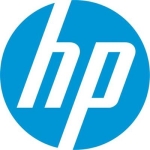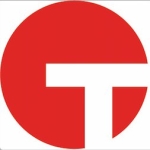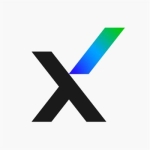What is our primary use case?
We use it for endpoint security for all of the systems in our environment. We have servers and workstations. We have macOS and Linux operating systems, and we are using it as an EDR/endpoint protection platform.
How has it helped my organization?
There is a lot of improvement from a security maturity perspective. Even though we have a very reputable and well-known SIEM, one of our go-to applications in our environment is SentinelOne. On a daily basis, almost all my staff or my analysts use it and operate it every day. It gives us a lot of information and a lot of data about what is going on. In addition to the detections, we are able to use and leverage Binary Vault. We could also use Remote Script Orchestration, which is an add-on that we could add to the platform. It allows us other functionalities that we would not normally have with another product in the same category. It allows us to run scripts on endpoints remotely out of the SentinelOne administrative GUI, which we use for all kinds of purposes. It has improved our abilities significantly in what we can do.
We have visibility into all our systems. We have visibility into malware or any suspicious activities that are occurring. We have the ability to quarantine systems based on the risks. If there is something going on, we have the ability to do that. We can also run remote scripts on systems, and we can control certain types of devices such as USB access. We have the ability to control what people can do with USBs. That is another functionality we use.
Most traditional antivirus platforms are very basic in terms of how you add exclusions. Usually, you completely exclude an application from detection. They do not provide you with various modes or various levels of visibility into an application. SentinelOne provides different levels of visibility, so you can have a level that has some visibility and does not completely make the application invisible to SentinelOne. It is the first platform that I have ever worked on with such capability. Instead of just a binary exclusion on or exclusion off, they provide different interoperability modes. There are five interoperability modes. Some are performance-focused, and some are visibility-focused. They allow you to select the mode that will give you the best balance of visibility and performance depending on the application. It is very handy. Most endpoint security platforms, antivirus, and EDRs are binary. You apply the exclusion and have zero visibility into what that particular application is doing in your environment. With SentinelOne, you can implicitly trust, or you have the ability to say that you trust it, but you want to have an eye on it if anything ever happens. For example, your third-party software is compromised, as happened with SolarWinds, and it starts doing funny things in your environment. That is what the interoperability exclusions give you with SentinelOne. This is an excellent feature.
In terms of its ability to ingest and correlate across our security solutions, they have recently added the Singularity marketplace in XDR. Not all of them but most of them are included in the license. We do leverage it. It gives us additional context. For example, we were able to add the VirusTotal API, which adds the context of what VirusTotal has in terms of information on a particular detection or binary that is detected in SentinelOne. They are starting to build those APIs out. We are able to add more context from other third-party applications. It is excellent. It is at no cost to us. We are using quite a few of them already for other platforms that are built out of the box. We are starting to leverage any out-of-the-box APIs for the platforms that we have.
It has helped us with a little bit of consolidation. We were able to consolidate the device control. We were using another platform for that. We had another completely separate vendor for USB control, and now, we have decided to not renew that license and move all the controls through SentinelOne.
It has not helped reduce alerts. The point is not to reduce alerts. It is to increase alerts. The point of Singularity is to reduce incidents, and, we for sure, have achieved that. The point of the Singularity platform is to block things that we do not want to occur in our environment or at least have visibility to them so that we can take action. If we were to strip it out completely, the organization would be in a much worse place.
It has helped free up our staff for other projects and tasks because the incident response has diminished. I do not have my analysts responding to threats. I have them just validating when something is detected to ensure that we are okay. For sure, it has freed them up. There are about 25% of time savings.
It has reduced our mean time to respond (MTTR). Without it, we would not have very much visibility into detections. It has improved our mean time to detect by 80% to 90%. If we did not have Singularity Complete, we would have very little visibility on the endpoints at least, and that is where most of our threats are occurring.
We have a service from SentinelOne called Vigilance. This service has reduced our mean time to react or respond. This 24/7 service has improved our mean time to respond significantly because it is the SentinelOne analysts who are responding. It has improved our mean time to respond by 80% because they are performing the analysis. They are the experts, and they are looking at the detection in our console. We do not have to go out and try to perform that same level of understanding of what we have just seen. Their experts take a look at that. Instead of spending hours and hours trying to figure out what we are seeing, it is literally down to just minutes by the Vigilance team. It is a separate license that we have incorporated with our Singularity license. It is a part of their MDR solution. It is a service they offer.
It has overall reduced our organizational risk.
What is most valuable?
The EDR functionality of the platform is what we use the most. That was the primary reason why we got SentinelOne. That is what we use the most in terms of functionality.
What needs improvement?
The ease of use can be better in Deep Visibility. It is not always the easiest. If I have not been in there in the Deep Visibility module for a long time, I do not always find it that easy to use. I tend to go and have to consult the help quite often if I have not been in there a long time. I am not a primary user of the application, so I do not always find it second nature to go in there and gather information. It could be a little easier.
For how long have I used the solution?
We have been using this solution for four years.
What do I think about the stability of the solution?
Its stability is next to nothing. It probably has an uptime of 99.99%. The only issue you would have is that the agent sometimes becomes unresponsive or corrupt, but there is not a single application in the world where you do not have some level of corruption or issues that may arise. If anything, it is much better than the others that we have.
What do I think about the scalability of the solution?
It is very scalable. We have doubled the number of licenses or agents we have had in the last three years, and we have not had any issues.
How are customer service and support?
They are excellent when it comes to interoperability and exclusions. For example, you may have somebody in your environment complaining about slowness, or you may have several situations where end-users may report that a certain application has been slow on their computer. SentinelOne gives you the ability to remotely pull the logs off a computer and send the logs to tech support for them to perform an analysis. They can perform their analysis from the logs and come back to you and say, "From what we are seeing, it looks like you have an application running application ABC that seems to require an exclusion. We recommend this interoperability type." All you have to do is say, "Oh, perfect. Thank you very much for that information. Add the exclusion." They have done all the analysis for you. You check back with your end-user to see if that has rectified the situation. In almost every circumstance that we have run into, it got rectified. I have never seen that type of analysis performed by an EDR or endpoint protection provider before. It is the first time I have seen that. This aspect of their support is excellent. However, some of the other things are not always detailed enough in terms of what we should be doing. They can be a bit vague, and if it does not help the situation, they may have to raise the issue to a different tier. So, they can be a little vague about exactly what you should do, but at least they set you on the right path. Overall, I would rate them an eight out of ten.
How would you rate customer service and support?
Which solution did I use previously and why did I switch?
It was a product by Carbon Black called Carbon Black Response and Carbon Black Defense. We switched because Carbon Black was purchased by VMware at the time, and their customer service was diminishing substantially. Some of the older products that we still had by Carbon Black were not being supported as well as they were previously. Their technology roadmap was not fantastic. We started looking at other products. We found CrowdStrike and SentinelOne to be more up-to-date and more modern EDR solutions. We saw a noticeable improvement in terms of technology and detection. At the time, SentinelOne was priding itself on the level of number of detections it could detect. A lot of that came into the reviews of the product at the time and the type of tests that it was undergoing and its performance in those tests. That was a primary reason for deciding to go with SentinelOne and going away from Carbon Black. Pricing was another excellent aspect of the platform.
How was the initial setup?
They host the platform in the cloud. It is a SaaS application for us.
Its deployment was extremely straightforward. All you have to do is deploy their agents on your computers. The agent checks in with your cloud console, and you start retrieving information immediately. Carbon Black Defense has that capability as well, but we went with SentinelOne because it did have that cloud capability. When COVID hit, and everybody left the office to go home to work, it was seamless for us. We have full visibility into every single system and asset in the organization whether they are on-premises or off-premises. They could be traveling. They could be anywhere in the world. As long as they have Internet connectivity, we have full visibility into their computers.
In terms of maintenance, the only maintenance that is required is to maintain the health of the agents. Sometimes the agents can become corrupt or stop functioning, so you have to ensure that you are checking for assets in which you run into those situations. The other thing would be the agent versions. You have to maintain agent versions as new versions of the agents come out. You can either automate it so that your agents get updated automatically on whatever schedule that you want, or you can do it manually. You can also do it through some other software deployment platform. That is the only thing you have to do maintenance on. The backend is all maintained by SentinelOne. All the updates to the console environment are taken care of by SentinelOne. Because it is a SaaS application, the only thing that the customer is responsible for is the agent deployment and upgrades.
What about the implementation team?
We worked directly with the SentinelOne team. From our side, there were two of us. From their side, there was probably just one engineer.
What was our ROI?
It has helped our organization save costs. In terms of metrics, I can only go by what other competitors were charging at the time, and we got it at a significantly better price than what some of the other competitors were charging.
The ROI is not just from the platform itself. It is also from the Vigilance service perspective that has freed up my guys to do many other things. It saves my analysts at least two to three hours per day in man-hours, so there is a huge return on investment there. For the price that the service costs, it is extremely good value.
What's my experience with pricing, setup cost, and licensing?
Their pricing was extremely competitive. That is why we stayed with them so long. We are renewing at the end of next month. We have already put in the approval. It is all set to go. We are renewing for another year or so year over year. It has been a very effective product, and it has been priced very competitively.
What other advice do I have?
To someone who is researching Singularity Complete, I would say that it is excellent in terms of quality and maturity.
I would advise performing an extensive proof of concept. If you have the ability to use a security tool validation platform to test out multiple platforms before choosing one, that would be a good idea. You should also understand various modules that are add-ons to the platform. It is extremely important.
I have used the Ranger functionality, and I am very familiar with it. It provides network and asset visibility. You can configure the agent to scan the subnet that it sits on and look for other assets that are missing the SentinelOne agent. You can create a policy saying that if a device sits on a specific subnet and has, for example, more than five systems, try to interrogate those systems to see if they are the systems that may be eligible for the SentinelOne agent but are missing one. We did not renew the license for that specific functionality of SentinelOne about a year ago. We decided to go with another vendor to give us that type of visibility.
Overall, I would rate SentinelOne Singularity Complete a nine out of ten.
Disclosure: PeerSpot contacted the reviewer to collect the review and to validate authenticity. The reviewer was referred by the vendor, but the review is not subject to editing or approval by the vendor.

















